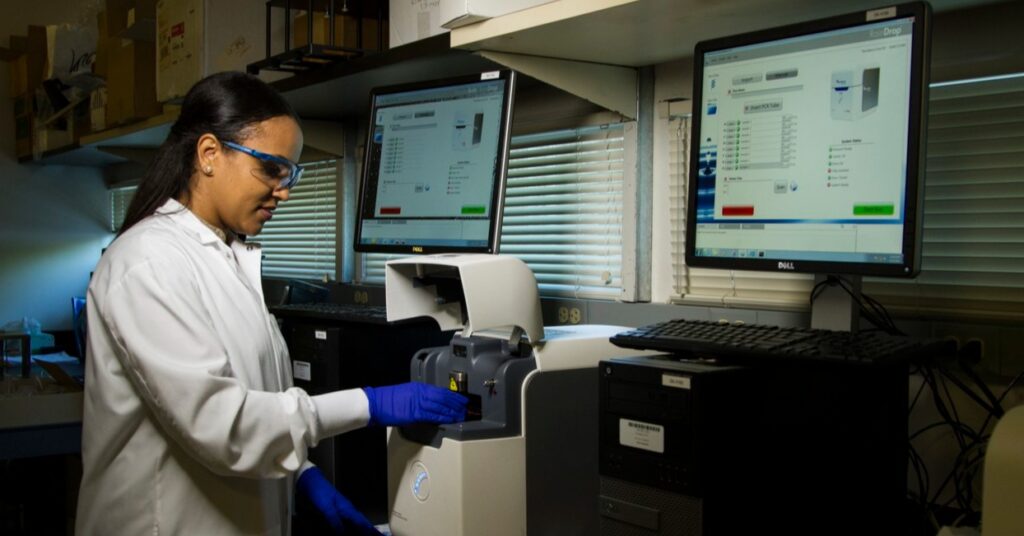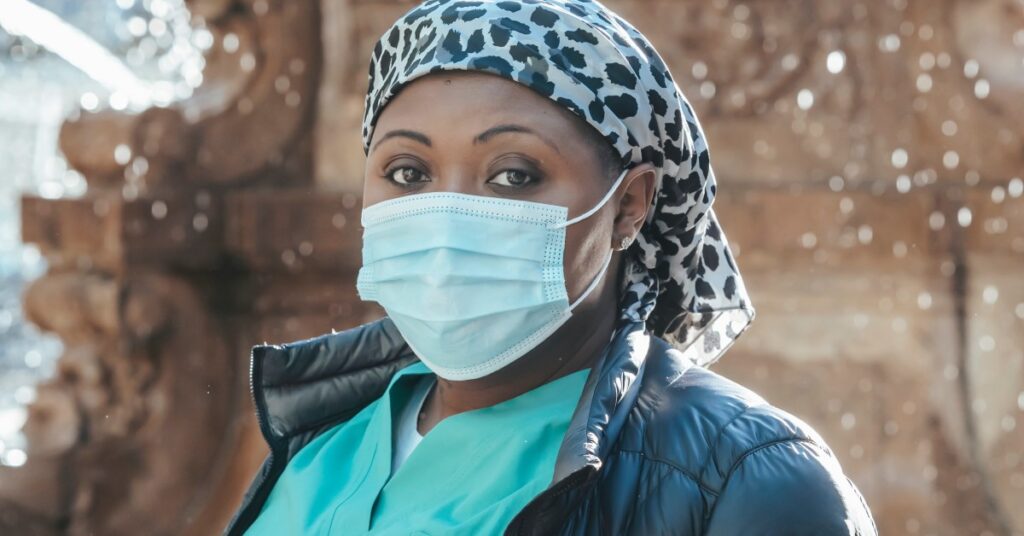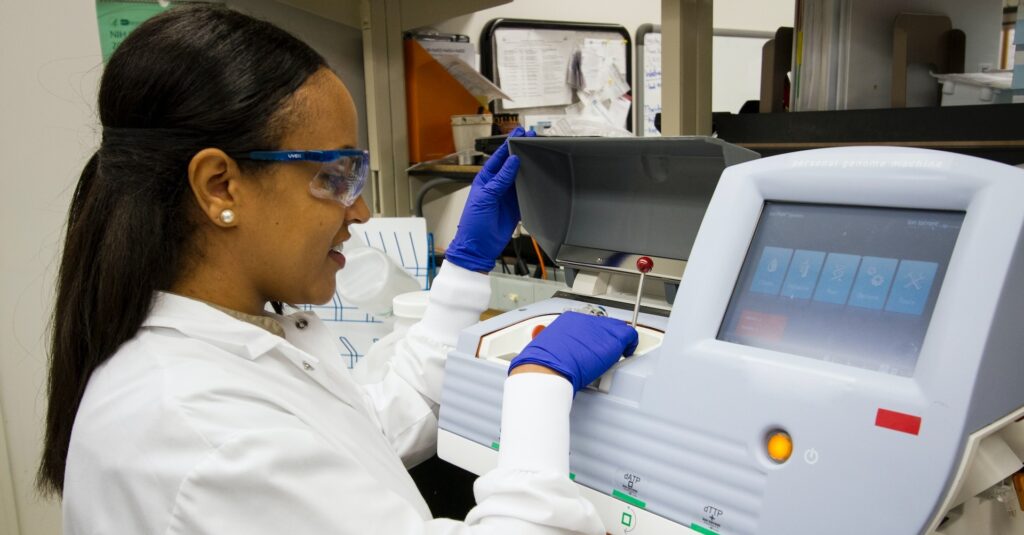
What Is the Epidemiological Triangle?
The epidemiological triad or triangle is an organized methodology used [...]

Not so long ago, there weren’t any historically Black colleges or universities (HBCUs) offering physical therapy (PT) degree programs, and few Black students entered the PT field.
Then in 1974, Howard University founded the first HBCU physical therapy department. The first class of six physical therapists graduated two years later. Tens of thousands more PT students have subsequently graduated from Howard and other HBCU physical therapy programs.
Still, work remains when it comes to welcoming students of all races/ethnicities into the PT profession. One 2017 study conducted by a physical therapy-focused think tank found only 2.6 percent of American Physical Therapy Association (APTA) members were Black. The APTA also determined that fewer than seven percent of applicants to Doctor of Physical Therapy (DPT) programs are Black. That number would need to double to achieve population-level representation in the profession.
The reasons Black and other non-white students are underrepresented in PT are complex. One thing is clear, however:historically Black colleges and universities play an important role in promoting diversity in physical therapy. The eight accredited HBCU physical therapy programs in the United States have made the DPT, and the physical therapy profession, accessible to more people. If you’re looking for a DPT program that’s inclusive, supportive, and affordable, all eight are worth checking out.
In this article about HBCU physical therapy programs, we cover:
It’s helpful to know what degrees you’ll need to become a physical therapist before you look at HBCU physical therapy programs. PTs must have a DPT degree to be eligible for licensure. You’ll need to earn a bachelor’s degree before you can apply to doctoral programs for PT.
Doctorate of Physical Therapy programs typically don’t specify which undergraduate degree applicants must have. That said, it’s not unusual for DPT students to have majored in:
Athletic trainers focus on the physical wellbeing of an athlete so they can avoid injury and address ways to maintain the demands of a sport. The coursework in an undergrad athletic training program also includes anatomy and psychology and common PT treatments relevant to the DPT.
Aspiring trainers and athletics coaches may pursue exercise physiology. The program covers nutrition, biology, anatomy, cardiopulmonary, and respiratory topics.
While similar to exercise physiology, exercise science expands on topics relevant to sports directors, massage therapists, and kinesiologists. The curriculum directly connects to subjects covered by a DPT.
A BS in Health Sciences casts an even wider net in the health field. Students can specialize later in their degrees to focus on areas like public health, psychology, or even dental health. A Doctor of Physical Therapy degree is a logical next step for health science majors.
Kinesiology directly refers to the science of movement. The training relates to physical therapy, fitness training, and athletic wellness.
This major focuses on the biology and chemistry of eating related to health, physical ability, and recovery. Nutrition majors typically take prerequisite courses required by DPT programs, such as biology, pharmaceuticals, and athletic performance.
A baccalaureate in physiology focuses on life science and covers things on molecular levels more so than the other degrees on our list. Students typically study the pathology of disease, cellular biology, and organic chemistry.
The study of psychological wellness and treatments directly relates to the health process encouraged by physical therapy. Students explore the biological, research, and statistical skills necessary for a DPT.
Some schools offer pre-physical therapy bachelor’s degree programs designed to fulfill the prerequisites for most DPT programs and prepare students for the classes they’ll take in graduate school.
Becoming a physical therapist typically takes between seven and eight years, and that’s before any optional residencies and fellowships. It’s possible to graduate from a physical therapy program more quickly at colleges and universities with a 3+3 DPT option. These accelerated programs bundle a Bachelor of Science in disciplines like health sciences, physiology, or exercise science with a Doctor of Physical Therapy in a program that only takes six years to complete.
There’s no question that HBCUs offer students an experience that predominantly white institutions can’t always replicate. These schools make up just three percent of colleges and universities in the US, but produce 27 percent of Black graduates in STEM fields. They graduate more Black doctors, physician assistants, and nurses than other schools.
One reason for this may be representation. Black students studying physical therapy and other medical disciplines are inspired by working with professors, mentors, and experts who come from similar backgrounds. Another reason may be that historically Black colleges and universities foster a more nurturing culture than other higher education institutions. One Gallup study found that Black students feel more supported at HBCUs and were more encouraged to pursue their dreams than their peers at other schools.
It’s worth pointing out that this support extends to students of all racial backgrounds. HBCUs are more diverse and inclusive than most people realize.
According to the American Academy of Physical Therapy, there are accredited PT programs at the following historically Black colleges and universities.
ASU’s three-year, 114-credit Clinical Doctorate in Physical Therapy degree program prepares entry-level physical therapists to sit for the National Physical Therapy Examination—and to serve a “diverse population with emphasis on medically underserved areas/populations.” The clinical curriculum emphasizes diversity in healthcare whenever possible, and students are taught to advocate to reduce health disparities and expand high-quality care to underserved populations.
Florida A&M University’s DPT program is full-time and campus-based. Students typically graduate in 34 months, with 32 weeks of full-time clinical practice experience. One of the stated goals of FAMU’s program is to prepare PTs to “contribute to abolishing healthcare disparities and access in existing and emerging healthcare arenas.”
The 112-credit hour DPT program at Hampton University emphasizes the “needs of the disadvantaged and underserved.” It aims to train PTs who will “promote the health of minority and underserved populations through engagement in prevention and wellness activities in teaching, research, and service.” The program accepts 30 students each year. Students have access to cardiopulmonary and neuromuscular research laboratories, and a Human Patient Simulator lab.
Howard University’s full-time, on-campus DPT program is offered through the school’s College of Nursing and Allied Health Sciences and prepares “promising African Americans and underserved minority populations with leadership potential to become compassionate and competent physical therapists.” This is one of the more accelerated physical therapy doctorate programs around. Students graduate in less than three years after completing eight semesters of core coursework and clinical internships.
The DPT program offered by the Langston University School of Physical Therapy accepts only 14 applicants each year and boasts a 100 percent graduation rate, plus a 100 percent overall pass rate on the National Physical Therapy Examination. Students are trained to become clinician generalists equipped to work with “underserved populations addressing minority health and minority health disparity issues within the scope of practice of physical therapy.”
This DPT program is delivered in a three-year lockstep format, beginning in the summer session of year one and ending in the spring semester of year three. Students take core classes and complete clinical lab work in the university’s brand new, state-of-the-art health sciences building. One hallmark of the program is its 100 percent two-year post-graduation employment rate.
In this program, full-time and part-time clinical experiences are integrated into classroom experiences. Students are welcome to pursue their own academic and clinical interests through independent study overseen by a faculty advisor and participate in research alongside faculty. University of Maryland Eastern Shore’s DPT program stands out for its commitment to unique learning opportunities and community outreach.
Students in both the entry-level DPT program and the transitional DPT program receive extra hands-on experience at the Department of Physical Therapy’s free clinic, participate in research focused on movement science in the Human Performance and Biodynamics Laboratory, and work with patients with multiple sclerosis through the school’s partnership with the MSFit Foundation.
Students in DPT programs at HBCUs and other institutions take core courses like:
This course covers the common daily challenges and questions that come up in physical therapy sessions with patients. It bridges the gap between research and treatment lessons with hands-on experience.
Similar to applied physical therapy, clinical skills explore communication, treatment, and diagnostic tactics when working one-on-one with a patient.
Students learn about the heart and lung-related ailments that affect a patient’s physical rehabilitation, and explore the clinical, research, and medical aspects of these disorders.
This course touches on the common occurrence of patients with comorbidities and how they related to the PT rehabilitation pathway. It also explores communication tactics for supporting struggling patients.
Physical therapists will often narrow down a list of potential diagnoses depending on their experience and examination of a patient. The course examines the structure differential diagnosis process.
Often a foundational course, students learn how to approach evidence-based practice—or EBP—through the six-step process of deductions.
The topic combines sports and fitness education with nutrition and common PT challenges. The course builds upon basic physiology and human biology courses to expand to strength and endurance.
In this course, students explore the connectivity of the body’s many systems, specifically the neurological, muscular, and cardiopulmonary systems. The information directly relates to diagnosing potential complications that hinder movement, strength, and flexibility.
This rather broad topic includes healthcare topics, ethical questions in PT, and how to disseminate information to patients in order to promote a healthy lifestyle.
In this class, students follow the physical and psychological journey from birth to late-in-life stages to understand the changing needs of a patient when facing a unique injury or illness.
A foundational course for PT practice, this class covers basic and advanced exercises for healthy and abnormal motor control. It also covers the learning, treatment, and diagnostic process based on motor movements.
Students dive more deeply into illnesses related to the musculoskeletal system, such as tendonitis, sprains, compressions, and Carpal Tunnel Syndrome.
The course outlines how a range of treatments can encourage neurological healing and strengthening through PT exercises and current research on future treatments.
Students will take a variety of neurology-focused courses throughout their training, including those related to gait, speech, neurological diseases, and spinal cord injuries.
The course typically covers evidence-based practices in PT for children and young adults. It examines the changing needs of growing patients with a range of ability levels and unique challenges.
The course covers long-term care and pain management, as well as how medications help or hinder a patient’s progress.
In this class, students explore a range of diseases throughout the body as well as their common immune response. PT specialists can then relate them back to physical therapy responses.
Students study the developments in manufactured limbs and other physical support devices. They will often work directly with patients to assist in the learning curve and strengthening necessary to use the device.
In this course, physical therapists learn how to decipher patient scans in order to suggest necessary PT treatments and mark progress during long-term care.
Therapeutic modality interventions refer to a specific series of treatments that involve mechanical, thermal, and light, and electromagnetic tools to treat muscular injury.
Most DPT programs devote about 80 percent of credit hours to classroom coursework, and 20 percent to clinical lab work and residencies or internships.
Doctor of Physical Therapy programs can be competitive, but average DPT acceptance rates at the top physical therapy schools are often higher than, say, the average acceptance rates at the top business schools. The University of Delaware, for instance, is home to the top physical therapy program in the US; it admits 37 percent of in-state applicants. That’s good news for aspiring PTs. The bad news is that it’s hard to find reliable information about HBCU physical therapy program acceptance rates. Many DPT resource guides publish school-wide average admission rates, but those won’t tell you much about what percentage of DPT applicants are accepted.
HBCUs have a reputation for having looser admissions standards than other institutions. While that may be true for some majors, don’t bank on PT being one of them. PT is a medical discipline, so standards for applicants tend to be higher, and cohorts are often small. Prerequisites vary by school, but the best thing you can do to ensure you make it into the HBCU physical therapy program of your choice is to exceed the requirements for applicants. You don’t need to graduate from a pre-PT program to apply to DPT programs, but you’ll need to take and maintain a high GPA in undergraduate courses such as:
Students entering DPT programs must have a deep knowledge of the body’s systems, physical structure, and how each relates to healthy movement and fitness performance.
All pre-med students complete a large collection of biology courses, such as genetics, anatomy, and cellular biology.
Biostatistics is the crossover between statistical data sets and the natural world. Medical students often explore public health, disease, and treatment data.
A foundational understanding of chemistry can help future PT professionals understand both the chemical reactions in the body during movement as well as the effect of common medications.
All medical students must take several high-level courses in calculus and statistics to understand complex biology topics.
Many universities require at least two semesters of general physics courses, each with a related lab component.
Psychology provides physical therapists with the tools to support the mental well-being of patients after an injury or when managing a long-term illness.
Whether students take a clinical or research path, statistics allows students to decipher complex studies and measure the progress of their own patients and treatments.
Most HBCU DPT programs also expect applicants to have some experience in the field. Hampton University asks applicants to show documented proof of at least 40 hours of volunteer or work experience in a hospital or clinic PT department. Langston University requires applicants to document at least 50 clinical observation hours. Some aspiring physical therapists meet these requirements by interning or volunteering in PT practices before applying to grad school.
The quick answer is sometimes, but generally not by much. According to the Commission on Accreditation in Physical Therapy Education, the average DPT tuition is about $19,000 per year for public schools and $37,400 per year for private institutions—meaning the total cost of this degree (not including textbooks, materials, housing, fees, etc.) falls somewhere between $66,000 and $113,000. That’s roughly what you’ll pay to pursue a DPT at an HBCU. Doctor of Physical Therapy students at Tennessee State University pay about $47,000 if they’re state residents and just over $100,000 if they’re not. In-state FAMU students pay about $42,000, while non-residents pay about $105,000.
Looking at price tags doesn’t tell us the whole story, however. HBCU physical therapy programs might not look any more affordable than programs at other institutions on paper. However, historically Black colleges and universities often offer substantial support to lower-income students and first-generation college students who may have challenges securing financial aid.
Today, aspiring physical therapists can choose from among Doctor of Physical Therapy programs at historically Black colleges and universities and predominantly white institutions. HBCUs do more than other schools to combat the lack of diversity in PT and other health professions by having more Black faculty members and retaining and graduating more Black students, but that’s not all.
“HBCUs have been known to have more nurturing environments that allow many students to matriculate without the worry of racial bias and discrimination by their peers,” writes Terrance R. Eubanks, who works as a professional advisor at Tennessee State University. “Advisors must recognize HBCUs as a catalyst for change and bastion of future health professionals that need to be cultivated and mentored.”
(This article was updated on December 30, 2021.)
Questions or feedback? Email editor@noodle.com

The epidemiological triad or triangle is an organized methodology used [...]

A family nurse practitioner (FNP) provides comprehensive primary health care [...]

FNPs practice in a broad range of health care settings. [...]

Some epidemiologists assist pharmaceutical companies in developing safer medicines. Some [...]

A Bachelor of Science in Nursing (BSN) is a four-year [...]
Categorized as: Physical Therapy, Nursing & Healthcare